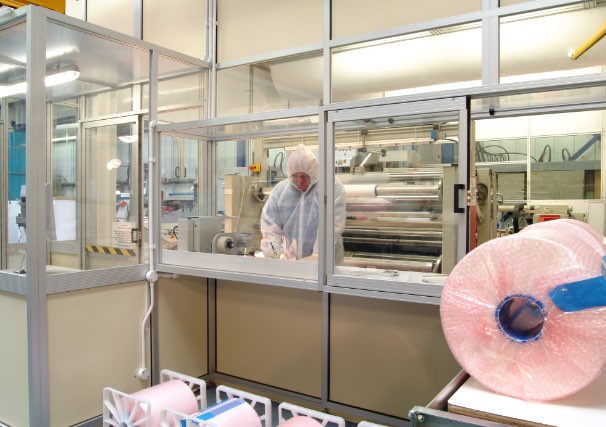PVDF
PVDF (PolyVinyliDene Fluoride)
Fluoropolymers
Fluoropolymers are ideal for pharmaceutical and biopharmaceutical processing equipment because they have excellent chemical and thermal resistance. Their molecules have continuous non-reactive surfaces and are compatible with virtually all chemicals and solvents. They are far more resistant to chemical attack than conventional chlorinated and hydrocarbon polymers and have far higher service temperatures. PTFE (Polytetrafluoroethylene) is the original Fluoropolymer, discovered by DuPont in 1938. From this original development, there have been a number of other materials developed – trying to improve on the difficult processing characteristics of PTFE. These have been more or less successful, having to trade properties of PTFE in order to attain other characteristics. The principal materials used in the industries that we serve are:
- PTFE
- PEEK
- PCTFE
- PVDF
- PFA
- PVDF
PVDF Properties and Characteristics
PVDF is generally used in applications requiring the high purity, strength, and resistance to solvents, acids, bases and heat. Compared to other fluoropolymers, like PTFE, PFA, FEP, it has an easier melt process because of its relatively low melting point of around 177°C.
Material properties of fluoropolymers – A comparison
In general, the chemical resistance of these materials are superior to most other families of plastics. This “chemically inert” characteristic is closely allied to their exceptional performance in ultra-pure environments. The chemical inertness varies between the fluoropolymers. The fully fluorinated resins such as PTFE, FEP, PFA and MFA exhibit chemical inertness to a wider range of chemicals than do the partially fluorinated polymers such as CTFE (or PCTFE) and ECTFE. A better property in one or two areas is accompanied by a diminished property in others (for example PTFE properties is better than PVDF in chemical resistance but it has lower mechanical properties at normal ambient temperatures. Fully fluorinated polymers (perfluoro polymers) such as PTFE, FEP and PFA offer better thermal (higher use temperature) and chemical resistance properties than their partially fluorinated counterparts like ECTFE or PCTFE. However, partially fluorinated resins posses better mechanical properties, such as tensile strength, toughness, abrasion and cut-through resistance at ambient temperatures.
The flex modulus of PVDF tubing is considerably higher than PTFE (relatively most flexible), FEP, PFA or MFA. This makes PVDF tubing considerably more rigid than the other materials; however it has higher tensile strength at ambient temperatures.
The selection of a resin for a specific use is based on criteria for that application; for example permeability at the use temperature may be a critical requirement and may override other features such as chemical resistance and tensile strength. In each case the choice of material is made by comparing the key property requirements and, of course, cost.
Typical applications
Filtration and separation equipment (filters, membranes, housings), transport and storage systems, insulation on some kinds of electrical wires, circuit assembly and printed circuit ,board rework is PVDF-insulated, tactile sensor arrays, strain gauges and lightweight audio transducers, artificial membranes

